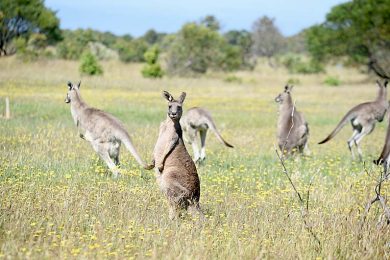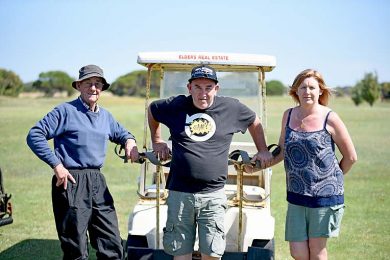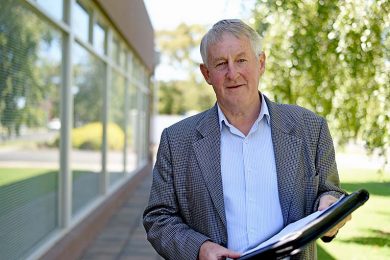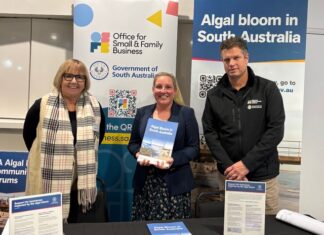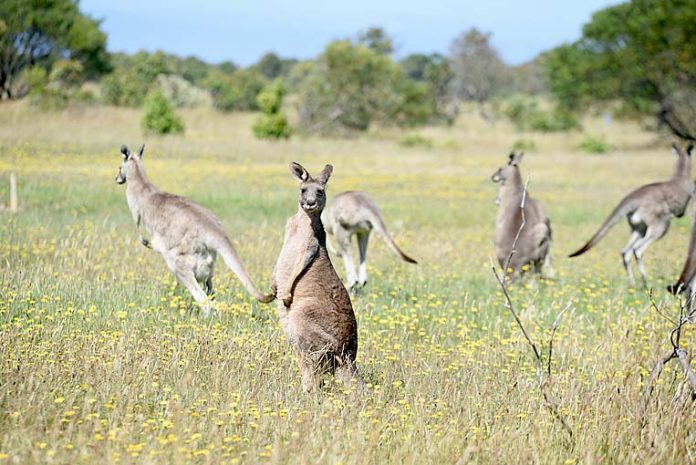
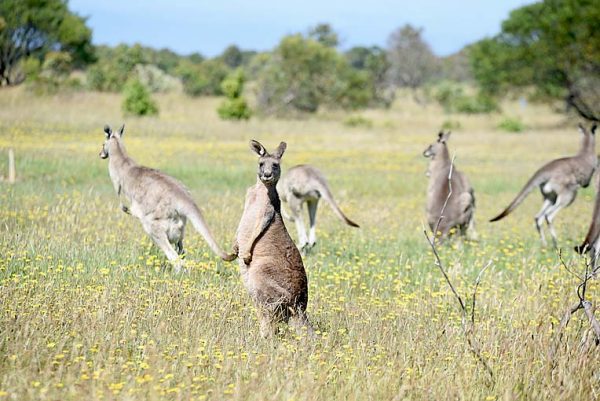
GRANT District Council will continue to push for a sustainable kangaroo harvest amid ongoing concerns over the impact of the native animals on farming productivity and road crashes.
This follows a number of farmers claiming they have large mobs of eastern grey kangaroos on their properties, destroying pasture and fences.
The Port MacDonnell Golf Club has also backed calls for a sustainable cull with more than 250 eastern grey kangaroos invading its coastal course.
According to the fed-up community club, kangaroo numbers are soaring and causing significant damage.
This trail of destruction includes holes in greens, broken flagsticks, as well as damage to fences and trees.
The club also claims the roaming native animals are posing a potential “safety risk” to its members.
Club secretary Mandy Coe – who took The Border Watch on a tour of the multiple mobs of kangaroos on the course – warned roo numbers were rising and a sustainable harvest was needed.
With some of the large kangaroos more than six foot high, she also flagged the possibility of someone – particularly children – being attacked by an aggressive buck.
“While nobody has been attacked here before, you do not know if it will happen – it is always that thought in your mind,” Ms Coe said.
“We do not want to wipe out the kangaroos, but we want to see them at sustainable levels.”
Ms Coe revealed kangaroo numbers at the golf course had increased 10-fold in recent years.
“While kangaroos have always been here, they are now everywhere,” she said.
Port MacDonnell landholders Leigh and Tina Collins have also expressed their concerns over high kangaroo numbers.
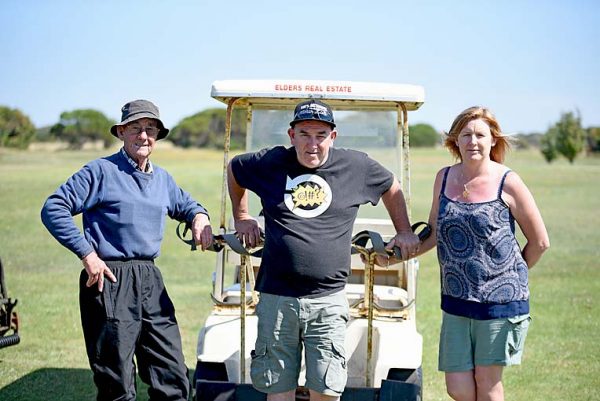
“On our 140 acre property at Port MacDonnell, there are 80-plus kangaroos there every day,” Mr Collins said.
He said kangaroos “twist up” and break the fence wire, which could result in stock wandering onto roads.
“The amount of grass the roos are eating is also a concern as they are baring out my paddocks leaving insufficient feed for my stock,” Mr Collins said.
While he has a permit to destroy 52 kangaroos, the farmer claimed the numbers were far greater.
“It makes sense to me to use the roo carcasses as pet meat rather than tag the dead roos and leave them to rot,” Mr Collins said.
OB Flat dairyfarmer Graeme Hamilton said farmers were struggling to compete against grazing kangaroos.
“We need a concerted district wide approach to control the kangaroo problem, firstly to bring their numbers back to sustainable level and then to maintain that level,” Mr Hamilton said.
“Historically, 40 years ago we considered it unheard of to see a kangaroo on our Whites Flat Road farm and likewise at Glenburnie and Yahl.”
He said the plantations gradually crept closer and provided habitat for kangaroos.
“Initially, the kangaroos did more damage by lying on the pasture then eating it – they are now eating the equivalent of another herd of cows,” Mr Hamilton said.
Council officials recently appeared before a state parliamentary committee to highlight the issue.
Figures suggest up to 40pc of vehicle damage repair claims in the district are the result of kangaroo collisions.
Speaking to the inquiry investigating over-abundant and pest species, Grant council economic development advisor Mike Ryan said anecdotal evidence pointed to “significant and increasing” population numbers of kangaroos in the council area.
He said council harboured concerns regarding the cost of damage to pastures and fences, as well as vehicle collisions and near misses.
“Our council area has extensive areas of both pine plantations and native forests, which provide a haven for large kangaroo populations,” Mr Ryan explained.
He revealed these plantations were next to both main highways and highly used roads.
“The over-abundant species causing most concern in our council area is the eastern grey kangaroo,” Mr Ryan said.
Ironically, he said this species was classified as rare and was not included in the state’s commercial harvest zones.
“Immediately across the border in Western Victoria, the species represents approximately 94pc of the kangaroo population,” Mr Ryan said.
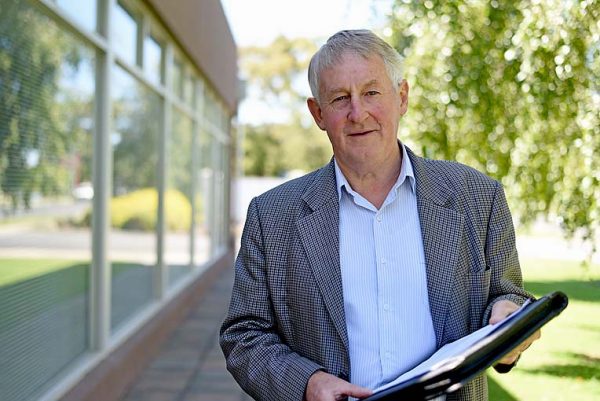
He said the council was seeking an effective means of managing kangaroo numbers.
“We are certainly not looking to wipe out vast numbers of kangaroos, but rather reduce numbers to more manageable levels,” Mr Ryan said.
He said Victoria was conducting kangaroo pet meat trials for control of the native animals damaging pasture, crops or impacting on biodiversity.
Mr Ryan said kangaroo meat could be value-added instead of leaving carcasses to decay in paddocks.
Council is also seeking any survey undertaken to determine numbers of kangaroos in the area include community involvement.
“Anecdotal evidence of numbers should be considered alongside scientific data,” he said.
Asked whether the council would have a social licence on a cull, Mr Ryan said there was a feeling from ratepayers the issue must be resolved.
Council invited landholders to submit their concerns over kangaroo numbers as evidence to the inquiry.

